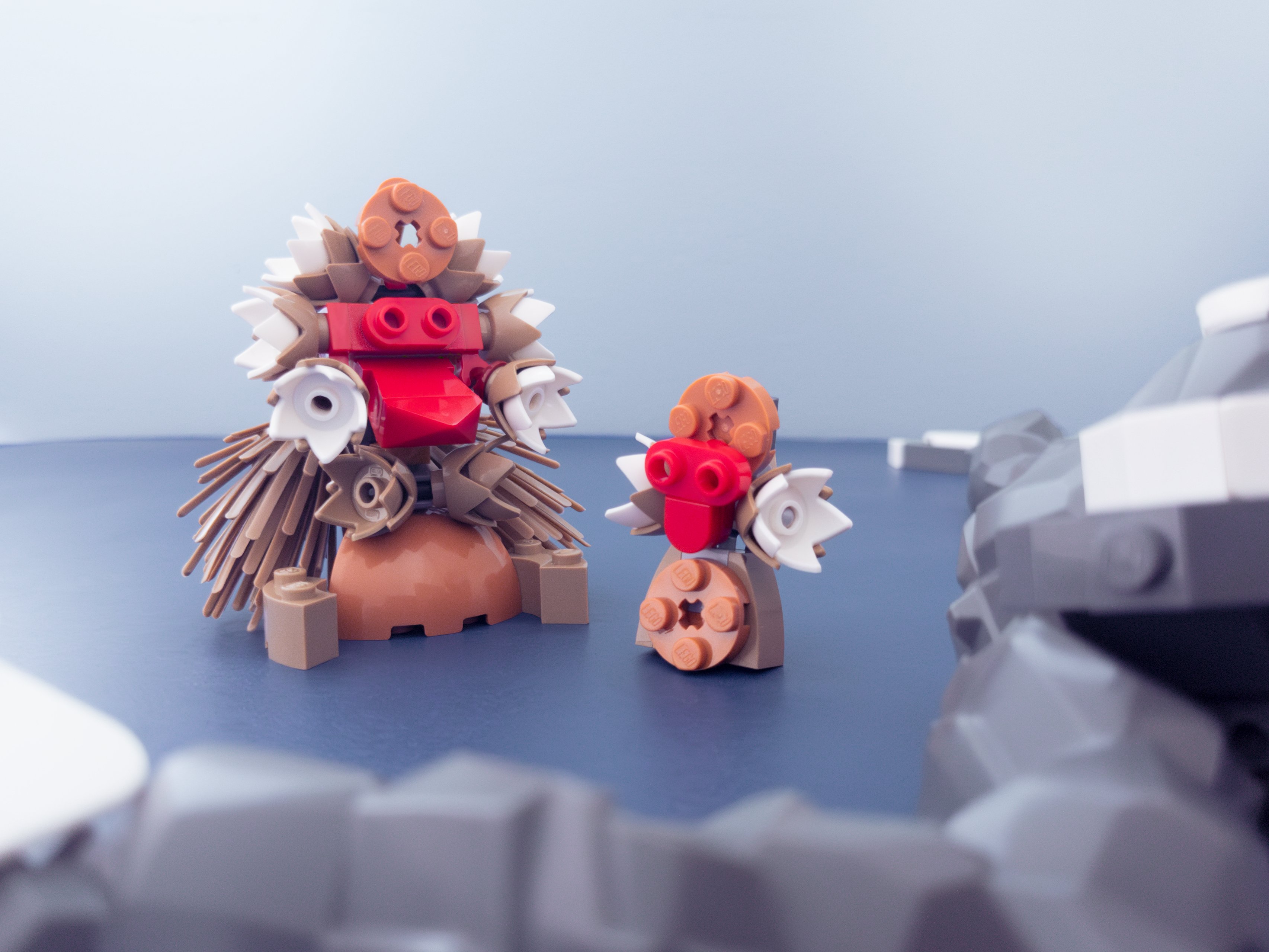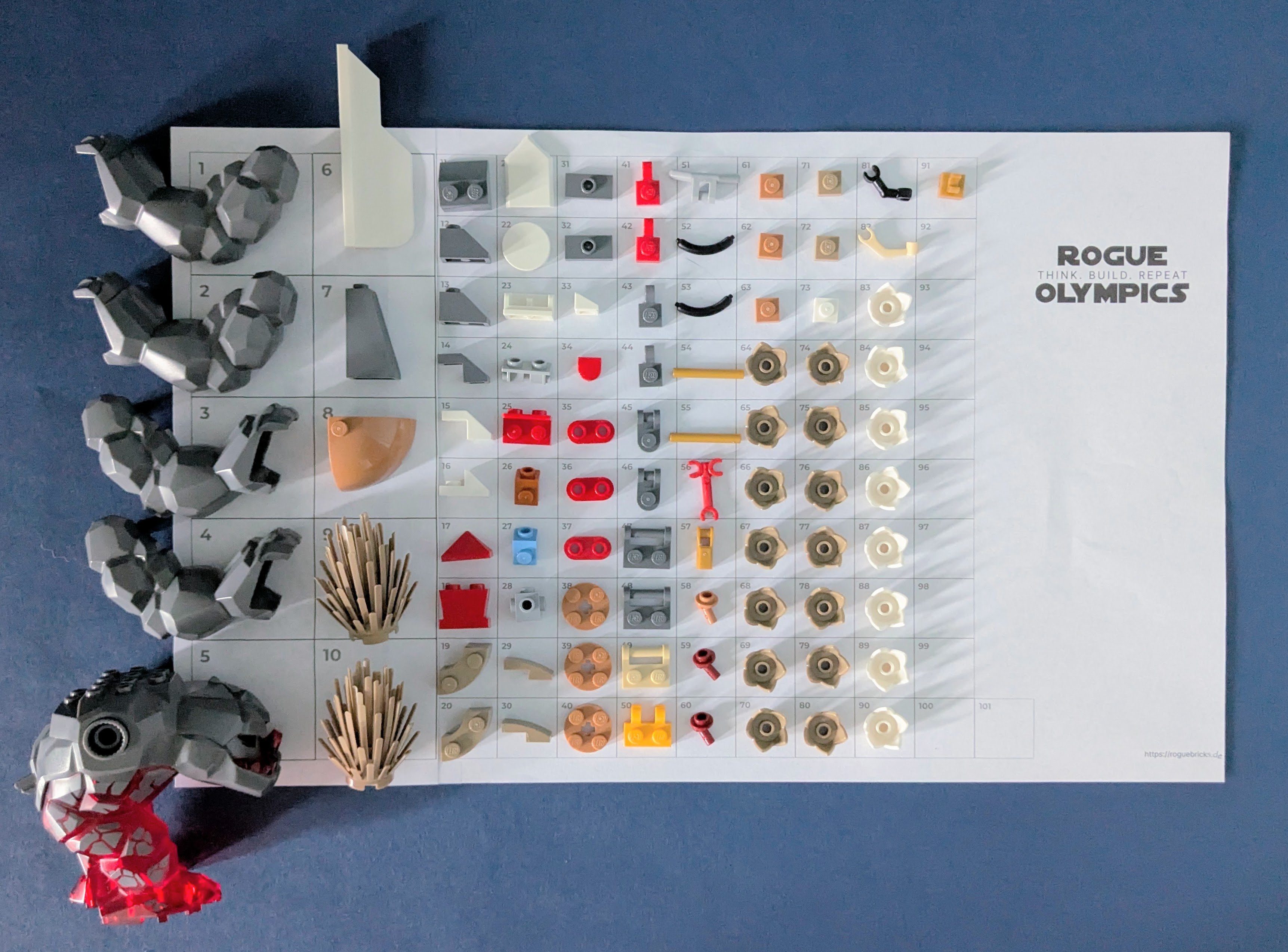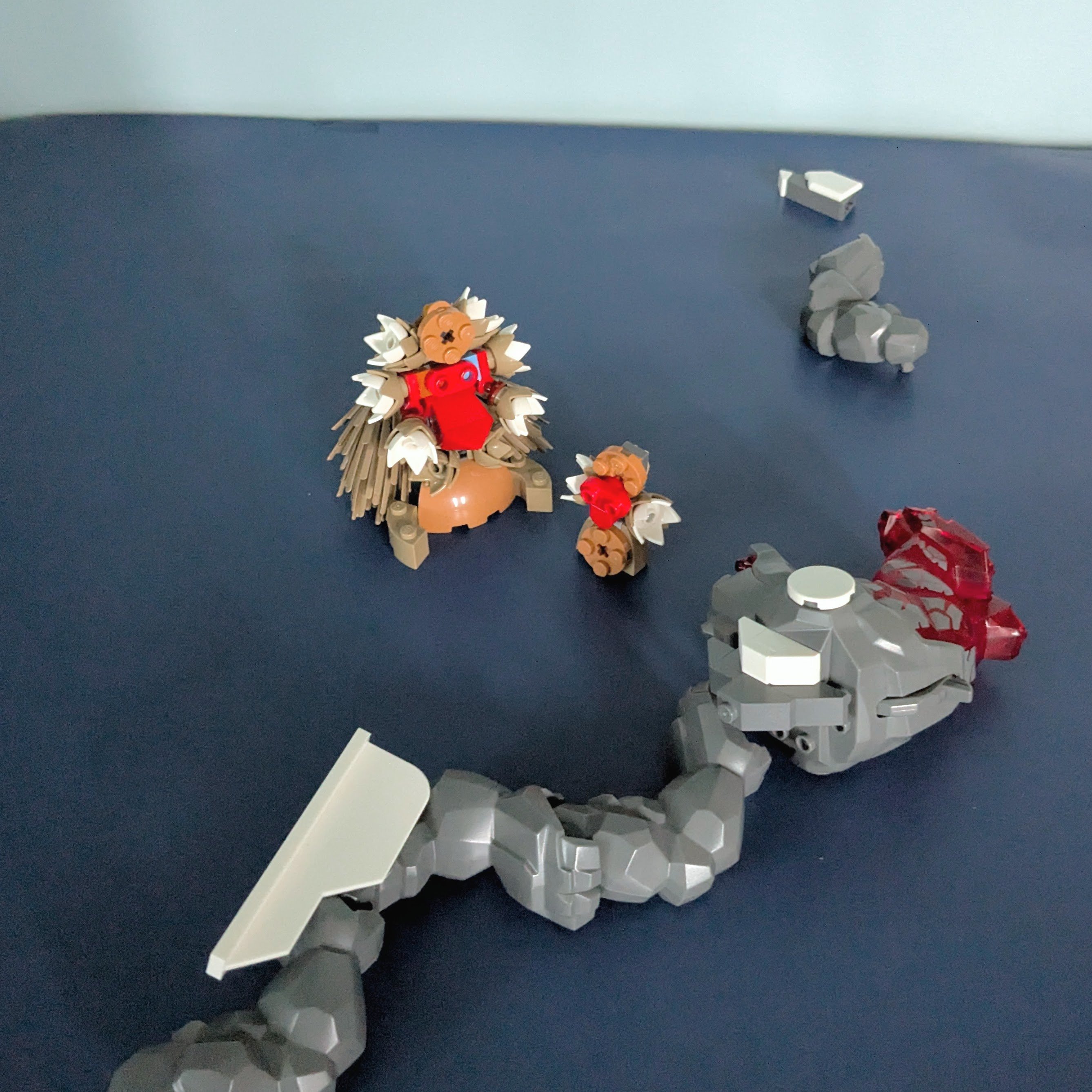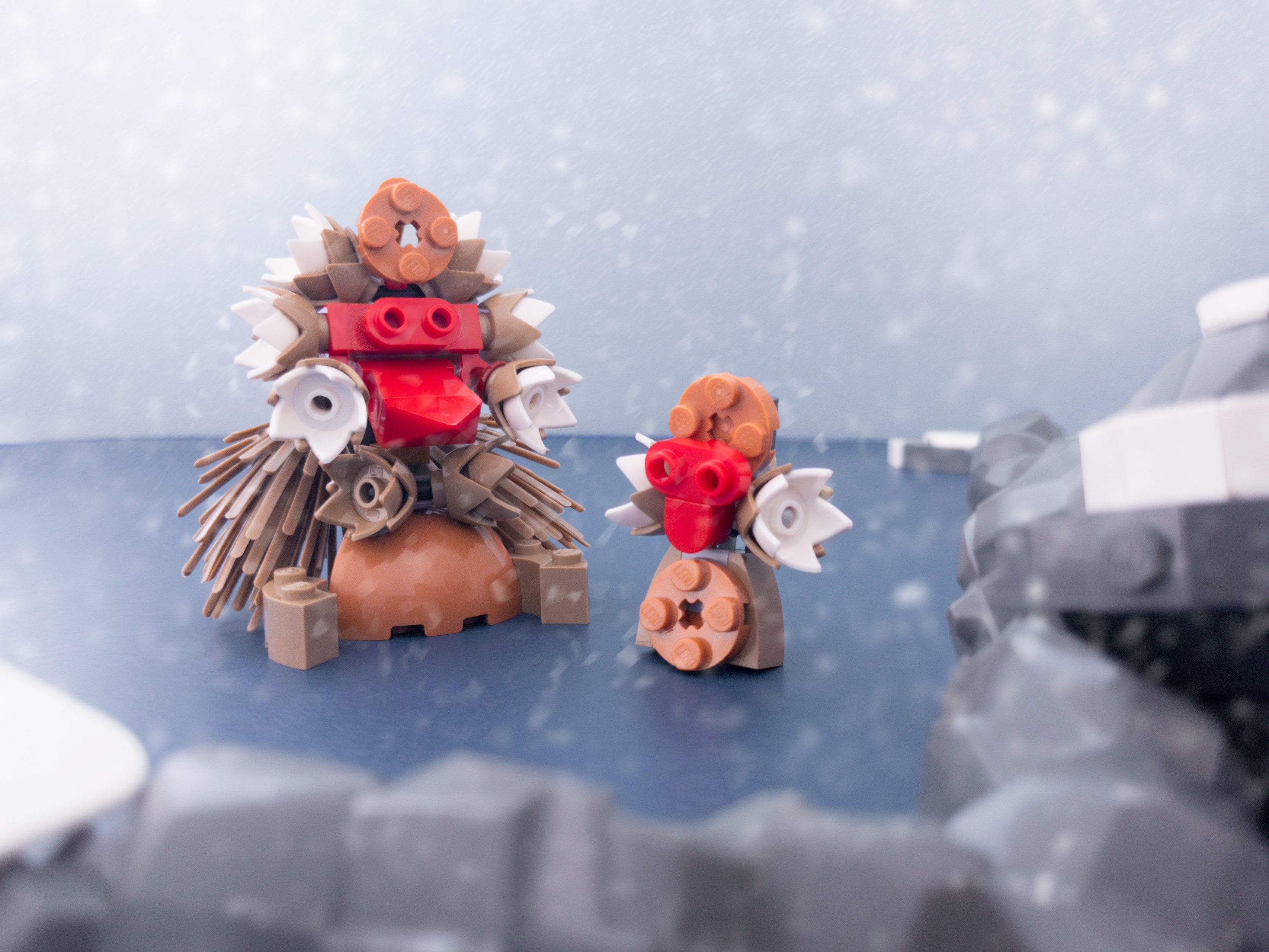
Jigokudani
Published
Brief
The seventh round RogueOlympics theme was “temperature”/“Temperatur.” Over the last two rounds, I’d picked niche concepts which once paid off, and once less so. This week, I wanted to keep myself open to a wide range of ideas.
Concepts and research
I started by listing as many associations for the theme word as I could. This style of brainstorming has been useful in other kinds of design work, so I thought I’d apply it to Lego as well.
The ideas that felt the most compelling were those with multiple extremes of temperature—such as the transition between hot sand and cold water at the beach, or a boiling hydrothermal vent in the frigid ocean depths.
Then, I recalled photos of monkeys bathing in hot springs, and I knew this was what I wanted to build for this round. I learned that this scene takes place in Jigokudani (meaning Hell Valley), a confluence of volcanic hot springs and frigid winters in the mountains of Hokkaido, Japan (source: Jigokudani Yaen-koen). Since the 1960s, Japanese macaques have bathed in man-made hot springs (onsen). This had the range of temperature extremes I was looking for and allowed me to do another character/creature build.
Build
I tried to capture the macaque’s distinct facial shapes at a small scale, using the original tapered minifigure legs? for the nose and mouth. I think I could have more faithfully captured the shape at a larger scale, but I’m happy with the texture and the color palette.
This is a fairly simple model, and the small scale allowed me to work on aspects of the whole scene at once. Throughout the process of building the model, I had it set up on a dark base and placed simple rock shapes in the foreground to check that the overall composition was working.

Presentation
Having felt that some of my builds for this contest felt a little flat, this was still a good chance to set up some forced perspective and create a greater sense of depth.

I tried adding some snow effects in the edit but wasn’t happy with the scale and texture in comparison to the depth visible in real photos of snowfall at the park.

Reflections
In some ways, this build feels more like a concept model than a finished product. While I naturally see the imperfections, I suppose it’s useful that I can put together a sketch model like this in a few days. I can see myself using a similar approach to validate ideas in a larger project.
During contests, a lot of the cohesiveness and refinement of my builds tends to come together in the final hours. That means putting a lot of trust in the rough early stages of a model compared to other projects where I have more time to iterate. In that light, the shortcuts taken in this build—unbuilt backs, simple arms and torso—feel like useful omissions that would allow me to efficiently use my time while and exploring multiple concepts.
What I learned:
- Progressive refinement—build a whole composition, then fill in the details.
- Corner cutting can be useful if the core idea is in place.